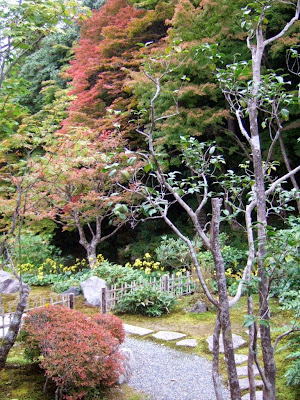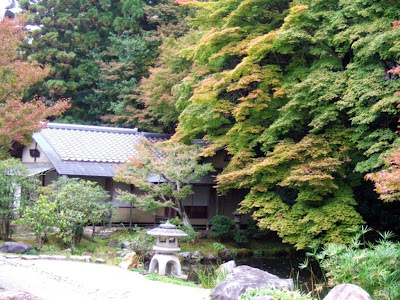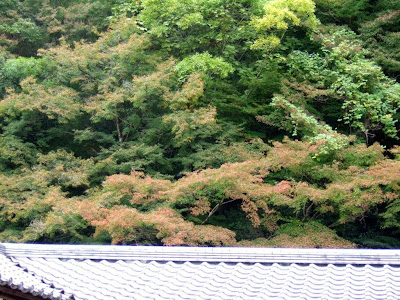
Nanjen-ji Temple nested in a lush green hills in Higashiyama District of East Kyoto is one of the most important Zen Temples in Japan. The complex that sits on a 27 forested land, is surrounded by twelve excellent small sub-temples. The complex comprises of a massive Sanmon Gate, subtle Zen gardens and extensive Main Hall with broad walkways. In year 1385, Nanzen-ji was declared as top of the five major temples that had been announced by Emperor in 1334. It was first established in year 1291 when a detached palace was donated and converted into a Zen temple by Emperor Kameyama (1249-1305) who was devoted to a Zen master and finally left home to become a monk. Nanjen-ji is presently the headquarter of Nanzen-ji Sect of Rinzai Buddhism, which is the highest rank of Zen practice in Japan.



Nanzen-ji went through several restoration in 1393 and 1447 after destroyed in fire. During civil war of late Muromachi period (1333-1573), it was again burnt down to ashes. The oldest structure today was rebuilt after 1605 when Rev. Ishin Suden was appointed as its head monk.



The 22 meters tall front Sanmon Gate was originally a structure built in 13th century but unfortunately was destroyed in 1369. The present one was rebuilt in year 1628 by feudal Lord Todo Takatora in memory of those who died in The Battle of Osaka Castle in year 1615.



The two storey Entrance Sanmon Gate has a steep staircase going up the top floor where Buddhist images are enshrined and where visitors offered with great view across Kyoto city. A separate admission fee is required.



A glance of internal temple grounds through the huge Sanmon gate, which is notable for its brilliant foliage in fall.


Nanjenji's Sanmon Gate is one of the three famous temple gates in Kyoto. The other two are at Ninna-ji and Tofuku-ji Temple.



The easiest way to have a brief understanding in Nanzen-ji and its past history, read the illustrations and drawing map that are erected near the site.



The head priest residence building Hojo (Non Zen Temple used Honbo for the same structure) leads to the two famous Zen gardens of Dai-Hojo and Ko-Hojo.


Mini waterfall forms part of a beautiful screen from a small tea room at the Kuri where former kitchen of the temple located. It is on the left hand side of Hojo Complex entrance area.


The Japanese Shishiodoshi fountains of bamboo spout at hillside outside the Hojo Building, look as if a framed scenery picture.


The most famous structures in Abbot's quarter Hojo is the Ko-Hojo rock garden which is known as Nyoshin-tei, and its 124 Fusuma screen paintings. The rocks displayed there are said to resemble tigers and cubs crossing through water and painting on the gold leaf on its sliding doors are a realistic depiction of tigers. Both are classified as national treasure of Japan.



The Karesansui Garden O-Hojo was connected to the back area of Ko-Hojo rock garden at the site of Seiryo-den Abbot's Hall. It is made up of sand, stones, rocks and moss. The arrangement designed to replicate the flow of ocean and land. The regularly traced ripples in the sand is the main feature of the garden and is the focus of individual meditates who faced it from the indoor position. It is considered the most significant samples that built by Kobori Enshu (1570-1647)during 1600s.


Building of Seiryo-den that contains several important Fusuma Screen Paintings on gold background of its chamber wall panels, created by Artist Eitoku-Kano (1543-1590), was contributed to temple by Emperor Go-Yozei. The Karesansui garden of Hojo-tei-en is said to be laid out during Keicho era (1596-1614), and building of Hatto Dharma Hall standing beyond the enclosed wall was restored in year 1909. Hatto Dharma hall at the temple grounds is not opened for public.


Structures around Karesansui Garden include buildings of Shoin and Kuri which was a kitchen and office to a Zen Temple, that usually built in front and to the side of Butsuden Main Hall and faced to Monks Hall So-do.


The elegant Rokudo-tei moss garden known by Japanese as Rokudo-tei.



Roof passage that leads to Fushikiran tea ceremony houses.



Fushikian tea ceremony houses were reachable through all these beautiful stone steps placed within the garden surrounded it.



The little wooden hut beyond the bamboo fencing is the old Kyushin-tei tea ceremony house



Kyushin-tei tea ceremony house leaned against the forested hills with beautifully landscaped garden is particularly attractive.



The hills behind tea houses began to turn into its first stage of foliage hue.


Every year in fall, the trees that are growing as if on the roof of Kyushin-tei tea house will start to give the brightest shade to its surrounding, forming a colorful screen and background to all its enclosed structures.


Tenju-an becomes the most popular sub-temple of Nanzen-ji as it has two renowned water gardens distinguished by two water falls and ponds with white crossing stones. The Temple dedicated to The Zen Master who guided Emperor Kameyama in his religious studies. Its gate, main hall and study hall are dated from 17th century.


Konchi-in is one of the finest sub-temples of Nanjen-ji. It was founded in year 1400 but rebuilt and relocated to the present location in early 1600s after destroyed in a fire. The Temple has various structures including a little shrine hall of Toshogu and some tea ceremony houses, beautiful rock gardens and Fusuma (sliding doors) paintings.


No comments:
Post a Comment